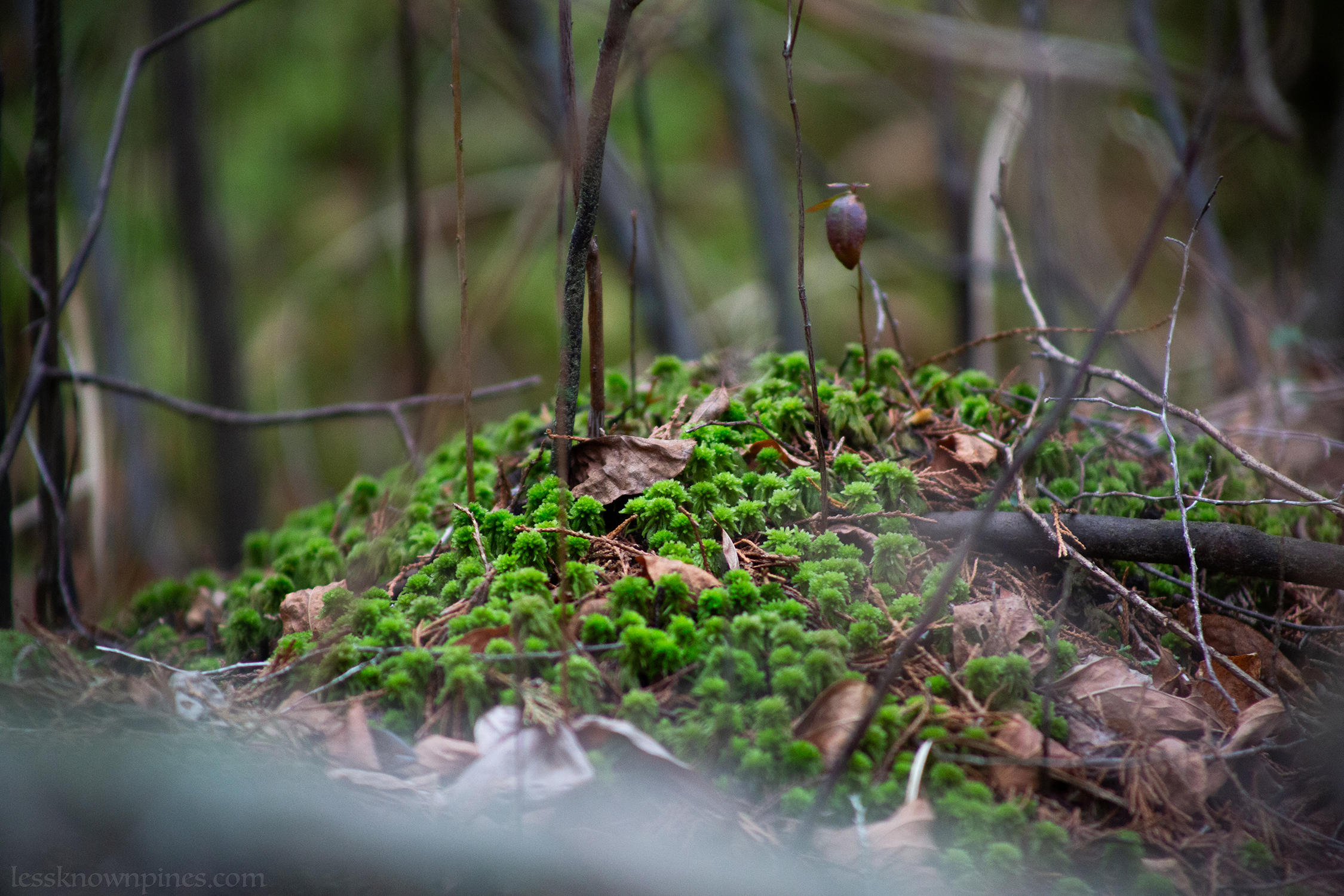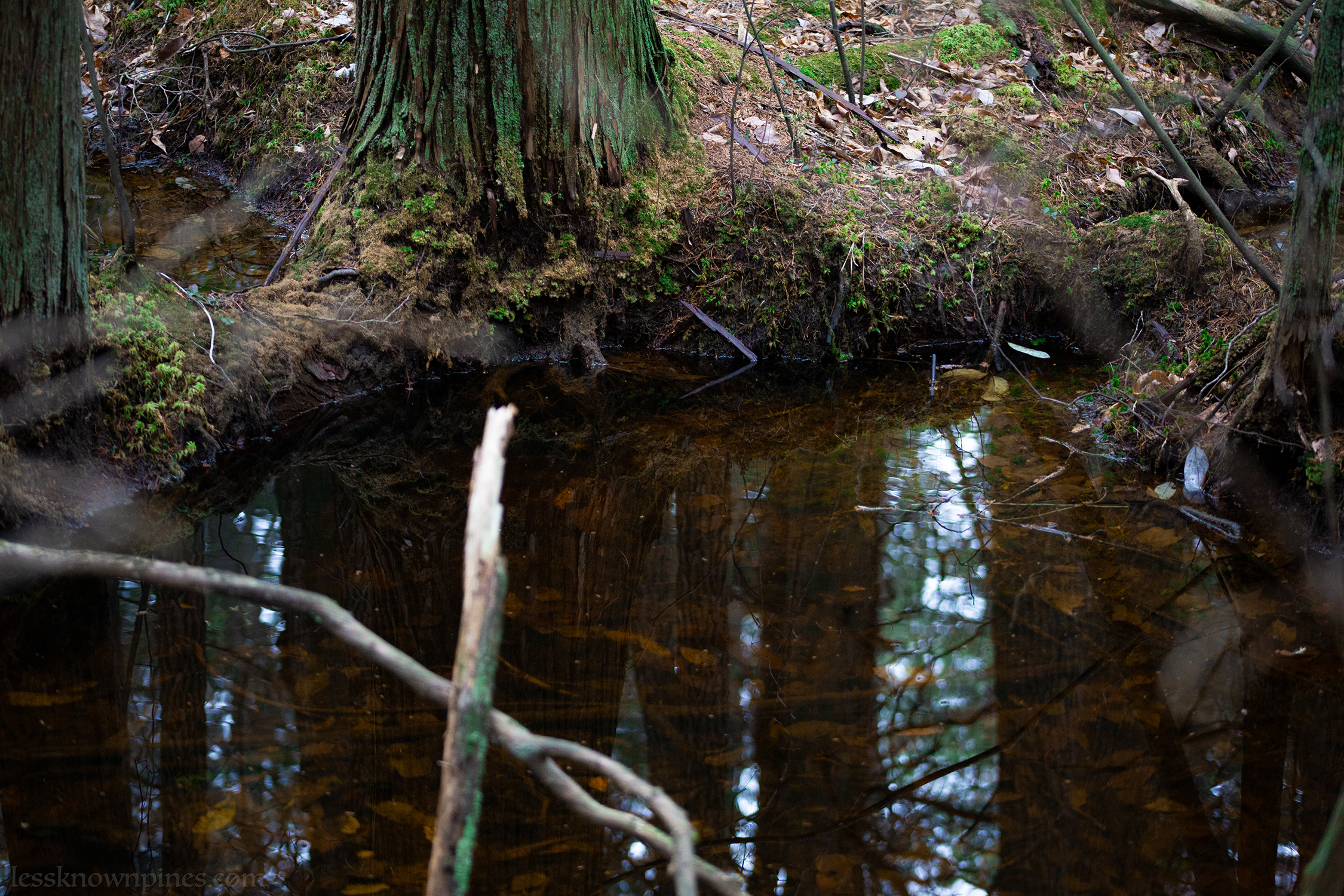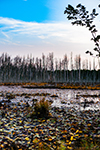Cedar Forests and Branches
One of the most integral parts of the pinelands is its cedar forests (often called 'branches'). These branches are very dense, containing Atlantic white cedar and many other species. Sourced by complex systems of water canals and channels, many more unique species are able to thrive in the pine barrens. While the majority of the pinelands consists of spaced out pitch pine trees and shrubs, the unique cedar forests are much denser, shadier, and damper. Although cedar forests only occupy a small percentage, its uniqueness really makes it stand out from the rest of the pine barrens.

Plants
A unique set of plant species are found throughout the cedar forests. Other than cedar, sphagnum moss is abundant in these areas. Even more plants include mountain laurels, sheep laurels, and smilax thorn bushes that can be found near cedar branches.



Like in the photo above, sphagnum moss will even cover the ground of a water filled pond.
 Moss covering fallen cedar log
Moss covering fallen cedar log
Much Cooler and Shadier
The cedar and the upland forests surround each other; although they may look and feel entirely different from one and other. Upland forests are not only drier, but they also feel dry. On hot days, you will still feel the temperature within the uplands. Cedar forests may actually feel cooler in temperature. More light is blocked, creating a shadier environment. Sphagnum moss thrives in this. These unique areas have a distinct aroma, along with a sensation of cool humidity.
 The trees are sometimes extremely close together, blocking out over half of all light
The trees are sometimes extremely close together, blocking out over half of all light
Branch Water Sources
Water collects in large ponds or lakes, being surrounded by cedar and pine trees. Historically in the pinelands, where ever there was a large pond or lake, there was a cedar forest. They are scattered throughout the pine barrens and pinelands. The ponds source the water that is needed for the cedar forests and their ecosystems. The water gets distributed through streams within the pond system and channeled into a network of canals, sourcing the forest with water. A natural slope allows water to move throughout the branch.






A tube will even transport water when interupted by a road or piece of land.
 Drier but still damp canal system
Drier but still damp canal system
Sometimes a drought will dry up the canals. In the photo above, the canal isn't entirely dry but it isn't flooded. Some of these smaller canals may not be linked to the major ponds at all. A slope or incline can move water through the forest.
Slow Decay
Atlantic white cedar has special properties that slow the rate of decay, or even stop it all together. You will notice that the fallen cedar logs may barely rot, whereas oak and fallen pitch will rot much more rapidly.








